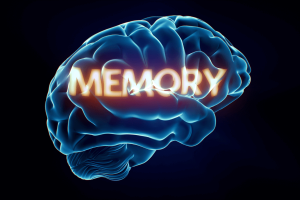
A recent study published in Nature Human Behaviour examined how to help the brain learn to overcome fear. This offers new hope for therapy for anxiety disorders. The researchers examined the neurophysiological mechanisms underlying fear extinction, the process of reducing conditioned fears through repeated exposure to a neutral stimulus (a previous fear) without threat. The researchers found critical differences in brain connectivity patterns associated with resilience versus vulnerability to anxiety.
The study included 49 patients (22 were females, 28.2 ± 8.18 years) with medically intractable epilepsy. Data were collected at “Pitié-Salpêtrière” Hospital in Paris, and at South China Normal University Hospital, Guangzhou. The study was conducted in accordance with the Declaration of Helsinki and was approved by a research ethics board at each site. All participants provided written informed consent and did not receive financial compensation.
Throughout extinction learning, participants showed expected reductions in fear responses across repeated trials. However, there were notable differences in the connectivity. Specifically, the ventromedial prefrontal cortex (vmPFC) connected more strongly with the amygdala for those who were faster at extinction learning. That is, participant-level vmPFC-amygdala coupling as measured through task-based functional connectivity was a significant predictor of participants’ ability to reduce their conditioned fear.
Conversely, researchers also observed a subset of participants with reduced vmPFC–amygdala connectivity who showed stronger, prolonged fears, suggesting a neurobiological indicator of anxiety disorder vulnerability. This connectivity accounted for 29% of the variance in extinction learning rates (p < 0.001).
The study also examined fear responses 24 hours later during a spontaneous recovery interval using a connectivity analysis, and coupling between the hippocampus and amygdala played a prominent role here as well. The ability to predict more fear recovery with increased hippocampal–amygdala coupling was r = 0.43 (p < 0.01), indicating that there are circuits that may support extinction. Still, other circuits underlie an individual’s propensity for extinguished fears to return.
Human neuroimaging studies indicate that fear learning and extinction involve a core circuit that includes the amygdala (AMY), hippocampus (HPC), and prefrontal cortex (PFC). The PFC and HPC are required for context-specific extinction, with the PFC uniquely supporting fear inhibition and contextual regulation. The lateral PFC (lPFC) supports flexible and task-dependent updating of previously formed memory traces, reflecting the lPFC’s role in adaptive cognitive control.
The researchers stated, “Knowing the exact circuits underlying extinction learning helps us understand why some individuals respond well to treatment while others relapse.” They emphasized that if we could identify these pathways via neuromodulation or pharmacologically, we could augment the therapeutic outcomes.
The study, which strongly supported methodology utilizing fMRI, SCRs, and modern connectivity methods, provides strong evidence for separate neural mechanisms that explain fear extinction and recovery. The study identifies predictors of resilience and vulnerability, which helps bring psychiatry towards personalized methods of treatment.
While further research in clinical populations is necessary, the authors are optimistic.” Our findings indicate that vmPFC–amygdala connectivity is not merely a correlate but rather a key driver of extinction success,” the authors wrote, “and importantly, could serve as a biomarker that could help inform treatment selection in the context of anxiety and trauma-related disorders.”
Anxiety disorders impact hundreds of millions across the globe, so identifying specific brain connectivity patterns that either enable or obstruct fear extinction represents an important step forward. By pinpointing why some fears fade while others return, the study offers insights that may guide the development of more effective, individualized therapies.
References: Pacheco-Estefan D, Bouyeure A, Jacob G, et al. Representational dynamics during extinction of fear memories in the human brain. Nat Hum Behav. 2025. doi:10.1038/s41562-025-02268-5













